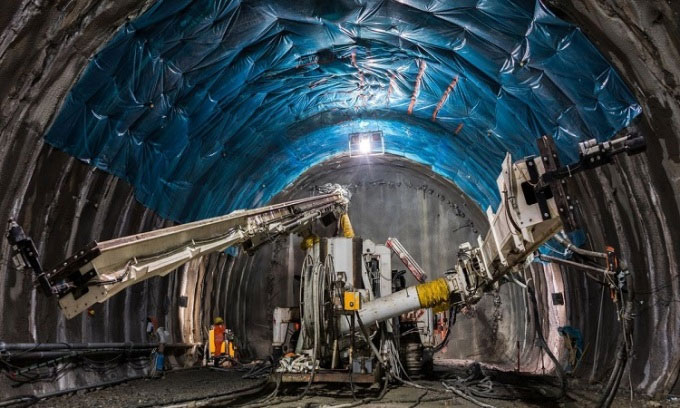Construction of an 11 billion USD tunnel connecting Scandinavia and the Mediterranean
The 55km Brenner railway tunnel running through the Alps will be completed in 2028, allowing trains to pass at 200km/h.
The Scandinavian-Mediterranean Corridor is an important north-south axis for the European economy. The corridor stretches from Finland and Sweden in the north to the island of Malta in the south, passing through Denmark, Germany, industrial zones in northern Italy and many ports in southern Italy. The road runs straight until it reaches the Alps, traffic slows down, creating a traffic jam. To solve the problem, in 1994, the European Union (EU) built the $ 11 billion Brenner Tunnel through the heart of the mountain range to connect Scandinavia with the Mediterranean. Located at 1,371 meters above sea level, Brenner is the lowest tunnel running through the Alps and is usable all year round.

The Brenner Tunnel will be completed in 2028.
In 1867, the Brenner railway was built and connected with the E45 highway in the 1970s, forming an important route from the North Sea to the Mediterranean and back. Today, the Brenner Railway carries 40% of all freight across the Alps. Due to the steep slope of the terrain and the effects of reducing train speed, more than two-thirds of the cargo is actually carried by road.
Repairing the existing railway is almost impossible due to the terrain, so the EU decided to build a completely new railway tunnel through the Alps. Starting from Innsbruck in Austria and connecting with Fortezza in Italy, the main line of the tunnel will extend for 55 kilometers. When connected with sub-tunnels in Innsbruck built in 1994, the project will become the longest underground railway network in the world with a total length of 64 km, surpassing the Gotthard tunnel in Switzerland.
The project includes an exploration tunnel, used to determine the condition of the route before construction, and also acts as a sewer system when completed. Two main tunnels located 70m apart contain trains running in both directions and four tunnels leading in on either side, connecting to the ground and allowing material transportation. Three emergency stations were built 20km apart to provide emergency exits for passengers if needed.
Construction began in 2008 and excavation work took place at the four main sites over a decade. Digging long tunnels through the mountains is not an easy job. The route runs through four different rocks and one of Europe's longest fault lines. So engineers had to use both blasting and tunneling (TBM) methods at a ratio of 50/50.
For sections using the first method, explosives are placed in pre-dug pits and detonated. The broken rock is transported by heavy machinery. After clearing the rock, the construction team sprayed concrete to stabilize the ground, then installed anchors, arched beams and reinforcing mesh to create the supporting structure. Snippets using TBM are much simpler. The machine excavates soil, moves through with a pass, and reinforces tunnels while teleporting. With an inner diameter of 8.1 m, the total amount of soil and rock excavated from the project is 21.5 million m3.
When completed in 2028, the Brenner tunnel will allow trains to pass at 200km/h. The journey from Innsbruck to Fortezza will be reduced from 80 minutes to 20 minutes.
- China built the world's longest sea tunnel
- Tunnel connecting Siberia and Alaska
- Video: Assembling small concrete blocks to form a tunnel
- Open China's longest underwater highway tunnel
- The idea of building a daring floating underground tunnel of Norway
- China is about to build the world's longest trans-sea railway tunnel
- The longest railway tunnel in the world is completed after 7 decades
- Elon Musk launched the first tunnel of Boring Company, personally going to Tesla car to try it
- Worm hole transcends space
- China completes the world's longest undersea tunnel
- China built Asia's longest water tunnel
- 'Green' trains in Europe
 Vietnam 5th Asian champion on fuel-efficient vehicles
Vietnam 5th Asian champion on fuel-efficient vehicles We can read all NASA studies completely free of charge
We can read all NASA studies completely free of charge Singer and songwriter Bob Dylan won the 2016 Nobel Prize for Literature
Singer and songwriter Bob Dylan won the 2016 Nobel Prize for Literature Scientific revolution in Asia
Scientific revolution in Asia